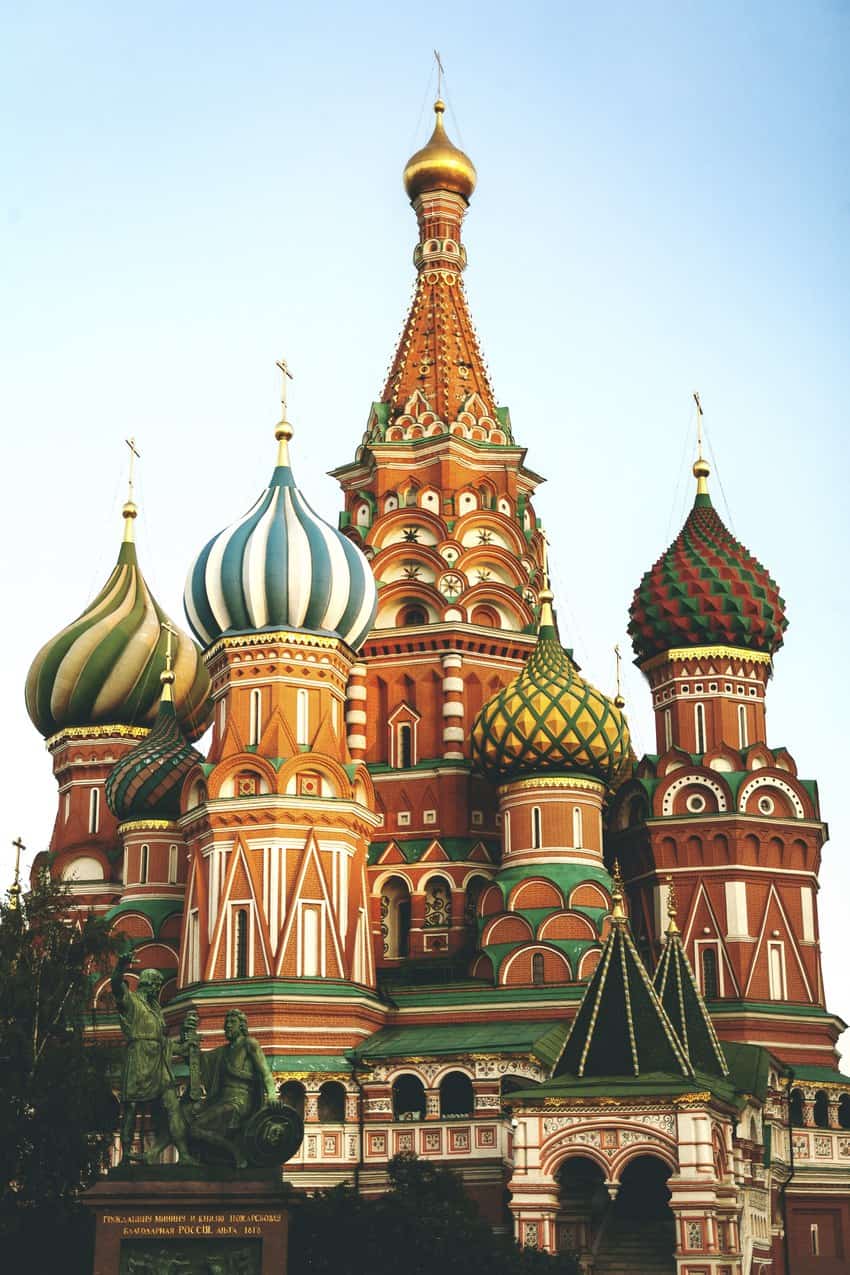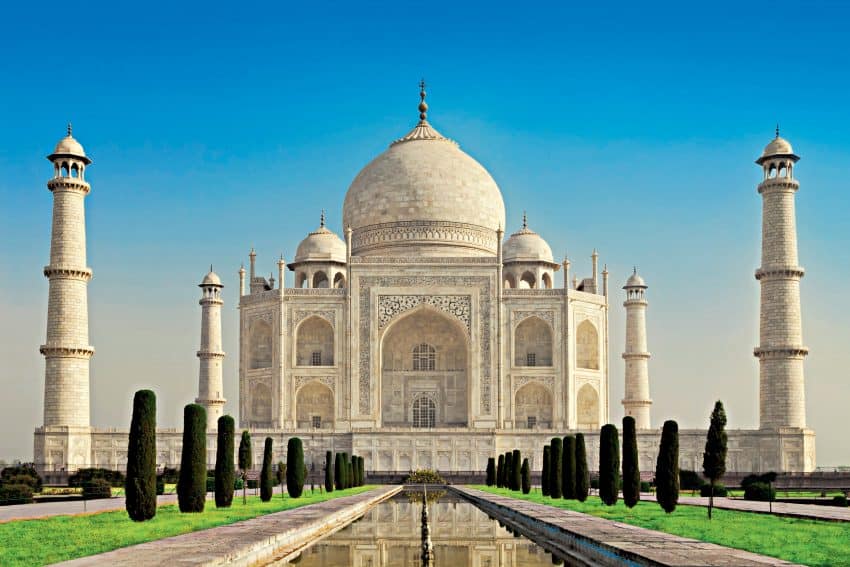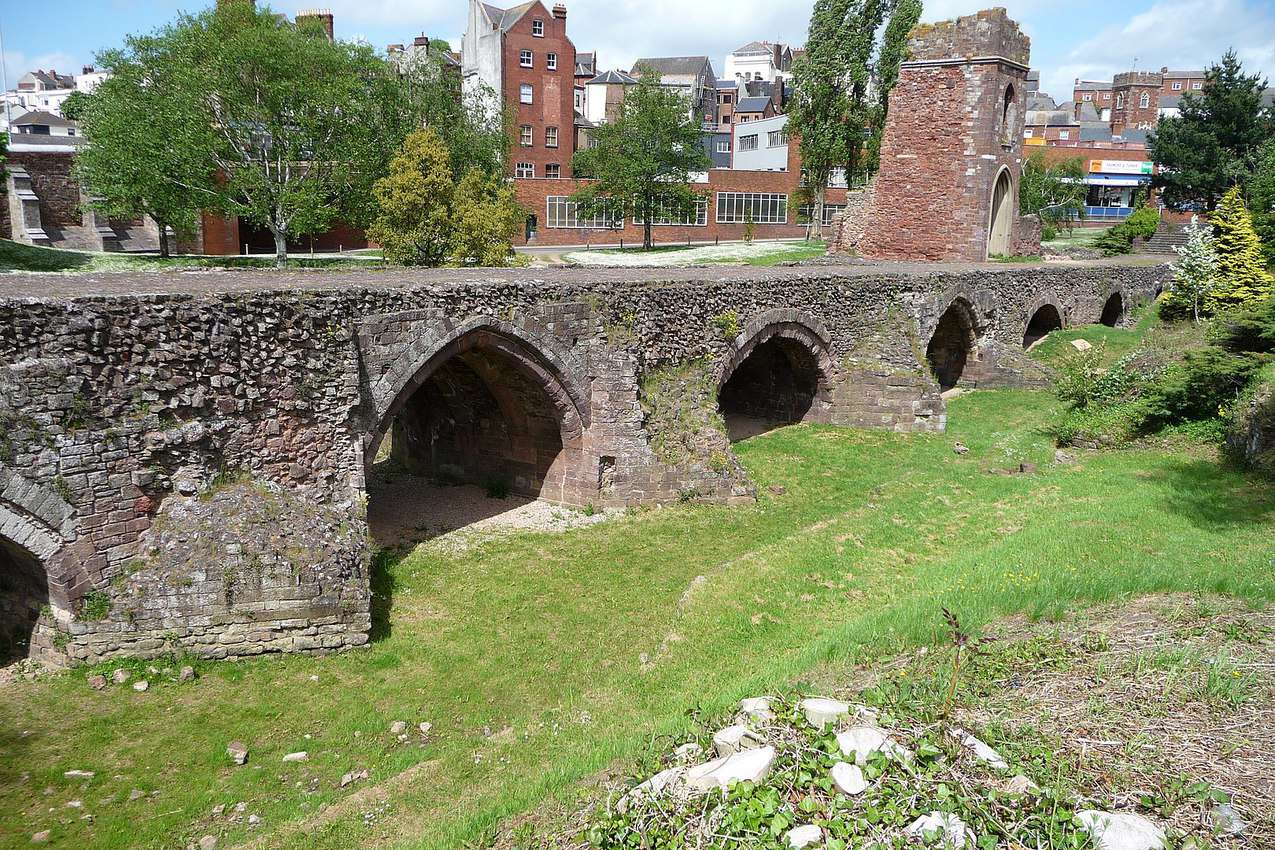
The World’s Most Beautiful Buildings According to Science
By Oscar Davis
St Paul’s Cathedral in London has been named as the most beautiful building to ever exist, using a 4,000-year-old mathematical equation.
The Cathedral, which was constructed in 1708, took the top spot in a study by Roofing Megastore that measured 100 of the world’s most highly renowned works of architecture up against the dimensions of the famous Golden Ratio, in an effort to decipher which buildings were most visually appealing to the human eye.
For countless years, both artists and architects have utilized the principle of the golden ratio in their creations, attempting to satisfy its specific requirements and create perfectly proportioned constructions. The golden ratio even manifests itself in nature, often found in flower petals, pine cones and human faces.
St Paul’s Cathedral achieved a 72.28% alignment to the ratio, making it the most attractive of all the buildings entered into the study. This accolade is just one of many the building has picked up during its existence, which has had an interesting history.
Destroyed Four Times
The Cathedral has actually been destroyed four times over within its lifespan, and after it was burnt down during the Great Fire of London, Sir Christopher Wren was commissioned to restore it to its former glory. Wren was a designer, astronomer, mathematician, scientist and world-famous architect; designing over 50 London churches during his lifetime, and St Paul’s was his masterpiece.
Among the top 10 are other classic architectural creations that are recognized globally, from the intricate design of Osaka Castle in Japan to the ancient construction of Florence Cathedral in Italy. If you need any travel inspiration for the future, this list brings it in droves.
St Paul’s Cathedral, England – 72.28% aligned to the Golden Ratio
The magnificent dome of St Paul’s sits proudly at the highest point of London, on Ludgate Hill. Attracting approximately 2 million visitors per year, the Cathedral can hold around 3,500 people at any one time; making it the ideal location for one of the most famous weddings in history, that of Lady Diana and Prince Charles.
Being an integral part of London’s history and tourism scene, it can get busy, particularly during the summer months. If you don’t want to share the experience with too many others, make sure to get there at its opening time of 10 am for some extra peace and quiet. At £17 a ticket for adults, don’t miss the chance to go inside and witness the rest of Wren’s stunning architectural talents that aren’t visible from the exterior.

Marina Bay Sands Hotel, Singapore – 70.88% aligned to the Golden Ratio
This luxury hotel is part of the S$5.5 billion Marina Bay Sands complex, where visitors can wander through the spectacular Gardens by the Bay, check out Singapore’s skyline from the roof deck, dine at world-renowned restaurants, and shop in a number of boutique stores.
Fifty-five-stories high, the hotel’s SkyPark Observation deck is open to the public, but it’s rooftop infinity pool, the largest in the world, is reserved for hotel guests only. Visitors looking for a luxury getaway can stay in one of the opulent rooms starting at $340 USD per night. Unfortunately, staying for a minimum of 1 night is the only way to get access to the world famous pool and its extravagant view – but we think it’s probably worth it.
Westminster Abbey, England – 70.50% aligned to the Golden Ratio
Another English building featuring in the top 3 is the intricately detailed, Gothic style Westminster Abbey in London. Similar to St Paul’s, Westminster Abbey has played host to numerous Royal weddings and sees approximately 1.57 million visitors per year.
Tickets for entry cost £18 per adult but you can enter for free for worship purposes only. Westminster Abbey is the location for every coronation that has taken place in England since the 11th century and Sir Christopher Wren, the architect of St Paul’s, was also commissioned to do work on the abbey during his lifetime.
Osaka Castle, Japan – 70.38% aligned to the Golden Ratio
At the time of its construction, Osaka Castle was the largest castle in Japan and though it was destroyed and rebuilt numerous times, it survived the Second World War and has been modernized in recent years to even include an elevator inside.
The castle tower is surrounded by 2 kilometers of gardens, including the Nishinomaru Garden, a stunning green space that includes 600 Cherry trees. Osaka Castle, therefore, is a prime viewing spot during Cherry Blossom season where multiple families visit to throw Hanami parties (traditional picnics under the Cherry trees).
It costs visitors 600 yen to enter the castle and Nishinomaru Garden, but you can wander the outskirts and the rest of the gardens for free.

St Basil’s Cathedral, Russia – 69.10% aligned to the Golden Ratio
Commissioned by Ivan the Terrible in the 1500s, Russia’s iconic St Basil’s Cathedral is almost symbolic of the country, it’s so well known. Standing tall in Moscow’s Red Square, the Cathedral is a unique blend of colors and shapes that no visitors will forget in a hurry.
Though impossible to imagine how the interior could be any more spectacular than the complex exterior, we highly recommend purchasing a ticket to explore it for 700 rubles. Along with the Kremlin which is close by, St Basil’s Cathedral was declared a World Heritage Site by UNESCO in 1990.
We also suggest visiting the area in the evening to catch a glimpse of it lit up against the night sky for a simply extraordinary view.

Casa Mila, Spain – 68.84% aligned to the Golden Ratio
Casa Mila was actually originally a humble apartment block, and though some of Spain’s other architectural works like La Sagrada Familia and Casa Batllo have more international status, we think Casa Mila is well-deserving of its spot in the top 10.
When it was constructed it was given a derogatory nickname of “La Pedrera” (meaning The Quarry) by locals, who didn’t like its limestone facade. Yet the building was designated as a UNESCO World Heritage site in 1984 and still attracts more than a million visitors each year.
If you head to the roof you can spot La Sagrada Familia from a distance and there’s a rooftop bar that even has live music through the summer. Our favorite fact about the building is that Gaudi wanted the residents to actually socialize and form a community, so he ensured that elevators didn’t visit every floor in order to encourage more frequent meetings in the stairwells!
For 20 euros you can purchase a tour of the building that will likely take around three hours and includes access to two different museums as well.

Florence Cathedral, the Duomo, Italy – 67.52% aligned to the Golden Ratio
Florence Cathedral, or Duomo, one of Italy’s most well-known buildings, is still to this day one of the 10 biggest churches in the world and is an impressive sight. Visitors can actually enter the Cathedral for free, but during peak periods the line can be incredibly long so it is best to arrive early!
To enter other areas like the museum, you’ll need to purchase a ticket, but these are only 18 euros and allow you to enter the entire complex. To climb the world-famous Dome itself, however; you’ll need another ticket, comfortable shoes, and some serious energy, with 463 steps to climb before reaching the top!
Taj Mahal, India – 67.45% aligned to the Golden Ratio

The Taj Mahal has long been considered one of the world’s most beautiful buildings so it’s no surprise that it reached the top 10 in the study. It’s actually a mausoleum, built by Shah Jahan as a memorial for his wife.
Devastated when she died during childbirth, he devoted himself to building the Taj Mahal in her memory. Taking an incredible 22 years to complete, with over 20,000 workers and 1000 elephants needed, it truly has to be seen to be believed.

The complex can get extraordinarily busy with visitors coming from all over the globe, so it’s best to visit as early as possible to try and beat the crowds. A ticket for foreigners costs 1,100 rupees and is well worth it, in our opinion.
If you want to stay away from the crowds and only view the exterior, however, across the Yamuna River is Mehtab Bagh, a quiet garden complex where you can watch the sun set peacefully over the Taj Mahal.
Dancing House, Czech Republic – 66.87% aligned to the Golden Ratio
Prague’s Dancing House sticks out like a sore thumb amongst the other traditional Gothic and Baroque architectural works that the city is known for, but it’s still a well-loved part of its more recent history.
With the curvy glass building pressed up against its upright neighbor, it was named the Dancing House because it looks like a pair of dancers.
Visitors that want to explore inside can only access the top floor of the building, where the Fred and Ginger Restaurant is located, boasting delicious food and incredible views over the entire city.
If you want to skip the food and drinks however, you can purchase a ticket to the viewing deck from £7 per person where you can look out over the Vltava River and spot both Prague Castle and the Charles Bridge in the distance.
Neuschwanstein Castle, Germany – 63.10% aligned to the Golden Ratio

Consistently voted as one of Germany’s top tourist attractions, the Neuschwanstein Castle is an absolute dream to visit.
It took 25 years to complete and its turrets were the inspiration behind Disney’s famous Sleeping Beauty and Cinderella castles.
Interestingly, the castle wasn’t designed by an architect but actually by a stage designer, and the inspiration for its original design came from its owner Prince Ludwig’s obsession with the German composer, Wagner!
Over one and a half million tourists visit every year and entrance to the castle only costs €13, during busy periods you should definitely consider booking ahead.
The Top 50 According to the Golden Ratio
Overall, old school architectural designs ended up scoring much higher in the study, with as little as 25% of the top 50 buildings having been built after the 19th century.
The United States, while not featuring in the top 10, managed to reign supreme in the top 50 with six of America’s most famous constructions taking a spot each. The White House, NYC’s Guggenheim, and St. Louis Cathedral in New Orleans all scored highly against the Golden Ratio.
Germany was next up on the list with five buildings, Italy with four, and Japan, Spain, and the UK all featuring three times each.
We have to highlight some of the other incredible locations that made an appearance too, with Cambodia’s Angkor Wat, Egypt’s Great Pyramid of Giza, and Brazil’s Sao Paulo Cathedral all beating over 50 of the rest of the world’s most famed buildings.
The 50 Most Beautiful Buildings in the World
| Rank | Building | Landmark | Golden Ratio % | Completed |
| 1 | St. Paul’s Cathedral | UK | 72.28% | 1710 |
| 2 | Marina Bay Sands Hotel | Singapore | 70.88% | 2010 |
| 3 | Westminster Abbey | UK | 70.50% | 1745 |
| 4 | Osaka Castle | Japan | 70.38% | 1583 |
| 5 | St Basil’s Cathedral | Russia | 69.10% | 1561 |
| 6 | Casa Mila | Spain | 68.64% | 1912 |
| 7 | Florence Cathedral | Italy | 67.52% | 1436 |
| 8 | Taj Mahal | India | 67.45% | 1653 |
| 9 | Dancing House | Czech Republic | 66.87% | 1996 |
| 10 | Neuschwanstein Castle | Germany | 63.10% | 1886 |
| 11 | Cologne Cathedral | Germany | 61.69% | 1880 |
| 12 | St. Peter’s Basilica | Vatican City | 61.47% | 1626 |
| 13 | St. Louis Cathedral | USA | 58.10% | 1850 |
| 14 | Petra | Jordan | 57.12% | 500 BC |
| 15 | Cathedral of Brasilia | Brazil | 55.79% | 1970 |
| 16 | Faisal Mosque | Pakistan | 55.23% | 1986 |
| 17 | The White House | USA | 53.31% | 1800 |
| 18 | Brandenburg Gate | Germany | 52.56% | 1791 |
| 19 | Great Pyramid of Giza | Egypt | 52.35% | 2560 BC |
| 20 | Milan Cathedral Duomo | Italy | 50.30% | 196 |
| 21 | Golden Pavilion | Japan | 50.14% | 1397 |
| 22 | Hawa Mahal | India | 49.18% | 1799 |
| 23 | Luxor Temple | Egypt | 49.14% | 1400 BC |
| 24 | Berlin Cathedral | Germany | 48.72% | 1905 |
| 25 | Solomon R. Guggenheim Museum | USA | 48.49% | 1959 |
| 26 | The Pantheon | Italy | 48.48% | 125 |
| 27 | Bourges Cathedral | France | 48.13% | 1230 |
| 28 | The Castle – Walt Disney World | USA | 46.87% | 1971 |
| 29 | The Chrysler Building | USA | 46.20% | 1930 |
| 30 | The Tokyo Imperial Palace | Japan | 45.55% | 1888 |
| 31 | 20 Fenchurch Street/The Walkie Talkie | UK | 43.82% | 2014 |
| 32 | Sagrada Familia | Spain | 43.23% | 2026 (planned) |
| 33 | Trevi Fountain | Italy | 42.42% | 1762 |
| 34 | Grand Kremlin Palace | Russia | 41.38% | 1849 |
| 35 | Casa Batlló | Spain | 41.03% | 1906 |
| 36 | Dresden Frauenkirche | Germany | 40.65% | 1743 |
| 37 | The Palace of Parliament | Romania | 40.02% | 1997 |
| 38 | Dome of the Rock | Israel | 39.99% | 692 |
| 39 | São Paulo Cathedral | Brazil | 38.77% | 1967 |
| 40 | Chichen Itza | Mexico | 38.23% | 600 |
| 41 | Grand Palace | Thailand | 37.84% | 1782 |
| 42 | Ephesus | Turkey | 37.56% | 1000 BC |
| 43 | Sydney Opera House | Australia | 35.08% | 1973 |
| 44 | The Empire State Building | USA | 35.04% | 1931 |
| 45 | Fairmont Le Château Frontenac | Canada | 34.53% | 1893 |
| 46 | Notre Dame Cathedral | France | 34.37% | 1345 |
| 47 | Burj Al Arab | UAE | 33.98% | 1999 |
| 48 | Hagia Sophia | Turkey | 33.61% | 537 |
| 49 | Angkor Wat | Cambodia | 33.07% | 1100 |
| 50 | Fisherman’s Bastion | Hungary | 33.01% |
1851 |
An Architect’s Point of View on the Golden Ratio and These Buildings
Jonathan Plant is a Managing Director at Lipton Plant Architects, a London-based Architectural firm. “For me, there are two fundamental design principles that one must consider in designing great architecture; context and detail.
Through a detailed understanding of a building’s context, the design of a building can respond to place and people. By that, I mean the physical and historical context of location and the context of the people the building is designed for.
Detail, in using often simple materials well and for the purpose they were intended. The way a brick is used, for example, can make a fundamental difference to how a building looks and feels. Laid well, using the right mortar and ensuring all dimensions and openings fall within a “brick dimension” will ensure the facade sings, even when to the eye of the beholder it may not be obvious.”
A Building Merchant’s Point of View
Gian Carlo-Grossi is a Managing Director at Roofing Megastore, a leading online roofing merchant. “Whether you’re an architect or not, many people have an opinion on which styles of architecture prevail over others, and it is a debate that continues right down to the styles of home we live in.
Being based in the UK, we were thrilled to find out that the official ‘most beautiful building in the world’ is located in London. But beyond St. Paul’s Cathedral itself, it was also evident that traditional buildings win out over much of the modern architecture found in today’s skylines.
The global mix of buildings in the top 20 also shows just how much beauty can be found in every corner of the world, and we hope the list provides not only inspiration for the architects and designers of the planet but people planning their travels for when restrictions are lifted!”
- These 9 U.S. National Parks Require Reservations in 2024 - April 17, 2024
- Take a Hike in Olympic National Park - April 17, 2024
- The Wild Mississippi: 2340 Miles Across Ten States - April 8, 2024


